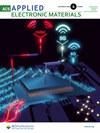Development of a Monte Carlo simulation platform for the systematic evaluation of photon-counting detector-based micro-CT
IF 4.3
3区 材料科学
Q1 ENGINEERING, ELECTRICAL & ELECTRONIC
引用次数: 0
Abstract
Purpose
This study aimed to develop a photon-counting detector (PCD) based micro-CT simulation platform for assessing the performance of three different PCD sensor materials: cadmium telluride (CdTe), gallium arsenide (GaAs), and silicon (Si). The evaluation encompasses the components of primary and scatter signals, performance of imaging contrast agents, and detector efficiency.
Methods
Simulations were performed using the Geant4 Monte Carlo toolkit, and a micro-PCD-CT system was meticulously modeled based on realistic geometric parameters. Results.
The simulation can obtain HU values consistent with measured results for iodine and calcium hydroxyapatite contrast agents. The two major components of scatter signals for CdTe and GaAs based PCD are fluorescent X-ray photons and photoelectrons, whereas for Si, the components are photoelectrons and Compton electrons. Scattering counts of CdTe and GaAs sensors can be effectively reduced by using energy thresholds, whereas those of Si sensor are insensitive to the applied threshold. The optimal threshold values for CdTe and GaAs are 30 and 15 keV, respectively. For contrast agent imaging, GaAs exhibits enhanced sensitivity to low photon energies compared to CdTe, while it’s contrast-to-noise ratio (CNR) values are slightly lower than those of CdTe at the same contrast agent concentration. Among the three sensor materials, Si has the lowest CNR and detector efficiency; CdTe exhibits the highest efficiency, except in low-energy ranges (< 45 keV), where GaAs has superior efficiency.
Conclusions
The proposed methods are expected to benefit PCD optimization and applications, including energy threshold selection, scattering correction, and may reduce the need for large-scale experiments.
开发蒙特卡洛模拟平台,用于系统评估基于光子计数探测器的微型计算机断层显微技术
目的 本研究旨在开发一个基于光子计数探测器(PCD)的微型计算机断层扫描模拟平台,用于评估三种不同的PCD传感器材料:碲化镉(CdTe)、砷化镓(GaAs)和硅(Si)的性能。评估内容包括主信号和散射信号的成分、成像造影剂的性能以及探测器的效率。方法:使用 Geant4 Monte Carlo 工具包进行模拟,并根据现实的几何参数对微型 PCD-CT 系统进行了细致的建模。结果:模拟可获得与碘和羟基磷灰石钙造影剂测量结果一致的 HU 值。基于碲化镉和砷化镓的 PCD 散射信号的两个主要成分是荧光 X 射线光子和光电子,而对于硅,其成分是光电子和康普顿电子。使用能量阈值可以有效减少碲化镉和砷化镓传感器的散射计数,而硅传感器的散射计数对所使用的阈值不敏感。碲化镉和砷化镓的最佳阈值分别为 30 和 15 千伏。在造影剂成像方面,与碲化镉相比,砷化镓对低光子能量的灵敏度更高,但在相同的造影剂浓度下,其对比度-噪声比(CNR)值略低于碲化镉。在三种传感器材料中,硅的 CNR 和探测器效率最低;碲化镉的效率最高,但在低能量范围(45 keV)内,砷化镓的效率更高。
本文章由计算机程序翻译,如有差异,请以英文原文为准。
求助全文
约1分钟内获得全文
求助全文

 求助内容:
求助内容: 应助结果提醒方式:
应助结果提醒方式:


